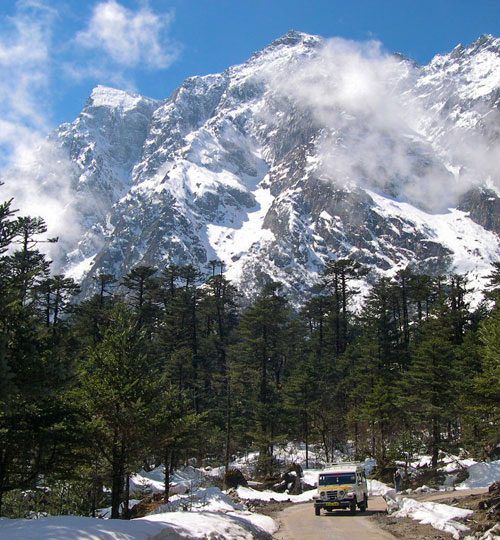Sikkim
Sikkim is the second smallest state in India after Goa. It is one of the most important and beautiful states in India. Surrounded by the great Himalayas, it is part of what is known as the North Eastern region. Sikkim shares its international border with Bhutan in the east, Nepal in the west and Tibet and China in the north. It shares its border with West Bengal in the south. The economic growth and literacy rate of this less populated state of India are praiseworthy.
A Brief History of Sikkim
It is widely regarded that Lepchas are the earliest inhabitants of the land of Sikkim. Phuntsog Namgyal was the first Chogyal (Monarch) of Sikkim. He founded his monarchy in 1642. His son shifted the capital from Yuksom to Rabdentse. The sovereignty of Sikkim was threatened a couple of times by the invasions of Bhutanese, Tibetan, and Nepalese. At last, during the British period, Sikkim allied with the British and in return, East India Company protected the state from the Gorkhas and Tibetans who snatched a lot of territory from Sikkim. Gradually Sikkim became a dependent state which was given a certain amount of autonomy but diplomatically and for military and other resources it was completely dependent on the East India Company. Sikkim was not a part of India when India achieved independence. In the year 1975 Sikkim became a part of India and became the 22nd state of the nation. The monarchy was abolished and Gangtok, the capital of Sikkim since 1894 remained the official capital of the newly formed state.




People And Culture
Sikkim is an ideal example of unity in diversity. The social fabric is based on harmony and blending of cultures. Every ethnic group has maintained their unique distinctive features in relation to their socio-cultural and religious arena. Three communities are the major dominant forces here namely Lepchas, Bhutias who originally belonged to Tibet and the Nepalese. A good number of Bengali and Marwari immigrants also settle here. Peaceful co-existence remains the theme of the Sikkimese society. Hinduism and Buddhism are the two major religions here. The Christian community is also quite strong here. Nepali, Sikkimese, and Lepcha are the major languages spoken here. Though Hindi and English are also quite popular. People here are fond of music and dance and every religious festival here is celebrated with fun and frolic.
Permits and entry
Although Indian tourists do not require any permit to enter the state of Sikkim, there are some places where Indian tourists require permission to visit such as Tsomgo-Nathula and Gurudongmar Lake. Also for visiting Thangu, Chopta Valley, Yumthang Valley in north Sikkim and for the Dzongri-Goecahala and Singalila trek domestic tourists need permission. NBTT organizes these permits for its guests. Nathula and Gurudongmar are not accessible to foreigners. All foreign nationals require an RAP (Restricted Area Permit) to visit Sikkim. Initially, the permission is given to foreign tourists to stay for the duration of 30 days. RAP is issued free of cost. It is issued in multiple offices of the Sikkim government as well as by the Indian embassy in different countries. Citizens of certain countries such as Pakistan, Bangladesh, China, Myanmar and Nigeria are not allowed to enter Sikkim normally. However, allowing Bangladeshi tourists to visit Sikkim is under active consideration at the moment.
Reaching Sikkim
Sikkim is well connected to Siliguri and NJP. Bagdogra Airport is the nearest major airport which is connected with the major cities across India and is just 120 km from Gangtok. NJP railway station is 115 km from Gangtok. Regular bus services from Siliguri to Gangtok, Pelling and other areas of Sikkim are a major way of communication. Private vehicles are available in abundance. A new airport has been commissioned as the first airport in Sikkim. It is located at Pakyong, about an hour’s drive from the capital Gangtok. Flights are yet to be operational at the time of writing this in 2018 but are expected to start service soon.
